40 plus years of Cleland design
by Geoff Apps
Tracker Bike (1968)
Specification
-
- Raleigh steel ‘Explorer’ frame for 24″ wheels with steel forks for 27″ wheels
- Sturmey Archer 4-speed Dynohub gears (internals of dynamo removed)
- Side-pull steel brakes front and rear, Amal ball-end levers
- Raleigh stainless steel 650A Westrick rims, stainless spokes
- Avon Skidway Gripster 26″ X 1 3/8″ tyres
- Williams Three-pin steel chainset with 36T ring
- Custom-made half-length steel mudguards
- Raleigh Wispa sprung saddle, short steel seatpost
- Steel Cowhorn handlebars
Is this where it all started?
Not really, I can remember back in the 1950s, before I could ride a bicycle, I used to borrow my friends scooter; did I ride along the smooth garden path? Nope, I got into a bit of trouble for creating a trail over their garden rockery feature.
Once I learned to cycle, I had real pleasure from riding my red Vindec on every stretch of rough terrain I could find, particularly a seemingly vast area of wasteland between Roding Lane South and the River Roding; near where I lived in Ilford, Essex, at that time. I’ve been back there recently; to my now adult eyes it’s not at all vast, and is now the site of Spire Roding Hospital and an electricity supply station, and Roding Lane was just that, a narrow, winding, high-banked country lane.
red Vindec on every stretch of rough terrain I could find, particularly a seemingly vast area of wasteland between Roding Lane South and the River Roding; near where I lived in Ilford, Essex, at that time. I’ve been back there recently; to my now adult eyes it’s not at all vast, and is now the site of Spire Roding Hospital and an electricity supply station, and Roding Lane was just that, a narrow, winding, high-banked country lane.
When in 1962 my family moved out from London to the village of Aston Clinton, Buckinghamshire, there were greater opportunities for this off-road cycling lark. It was a period of quite sudden increased affluence, and bicycles were being dumped in favour of cars. I would pull them out of ditches, retrieve them from dumps, rescue them from the canal, and drag them home, sometimes quite a distance, much to my parents’ despair.
These bikes and bits were lovingly cleaned and assembled into bikes of various shapes and sizes. I was not alone; many of my contemporaries rode modified bicycles on paths and tracks around the local woods (‘Tracker bike’ was the term we used then for a bike to be used off-road, not to be confused with a bike designed for an oval racing track).
The difference between me and my contemporaries? I became convinced that this would be the future of cycling…
Not a very comfortable place to be; everyone I talked to about this idea thought I was stupid or mad.
(some still do, actually)
The machine in the photo dates from around 1968. Nearly all the components would have been salvaged, apart from those components which would not have been on a dumped bike: knobbly tyres, cow-horn handlebar and the (for those days tiny) 32T chainring (or clanger, as we used to call them in those days) to fit a Williams crankset. This is but a snapshot in a lifelong process that ain’t ended yet!
Range Rider (1979)
Specification
-
- Custom built steel frame with Reynolds 531 forks
- Sun Tour VXGT derailleur 7-speed gears
- Leleu ‘Floating-cam’ drum brakes
- 650b Super Champion alloy rims
- 44-584 Nokia Hakkapeliitta tyres
- Front pannier carrier fitted to rear
- Steel braze-on Skateplate
- Aluminium chainguard
- Sakae chainset 36T inner ring, outer ring teeth removed to act as guard
- Custom-made full length Chromoplastic mudguards
- Brooks ‘Europa’ sprung saddle and Alloy seatpost
- Rechargable front light and rear lights (the orange thing under the saddle)
- SR alloy ‘North Road’ handlebars
The Range Rider concept machine was the outcome of years of serious bike building, riding, testing and re-designing; creating ‘if only’ fantasy drawings. During that period (late 60s and 70s), I took up cycle speedway, racing for Horspath Hammers, and later, motorcycle observed trials competition, this absorbed much of my attention and money. Nevertheless, I constantly thought about how my off-road motorcycle riding experience could be translated into bicycle design.
There were no suitable bicycles and few useable components available on the market. BMX emerged in America in the mid-70s, and it sparked a number of ideas in my mind, but there was still a long way to go to create the bicycle I wanted.
The prototype pictured dates from 1979 and heralded a fundamental consolidation of approach and represents the original Cleland.
It was first tested in the Lake District, later the Isle of Man, and subsequently in many locations around the UK. The design was rapidly evolving, and several further versions were produced between early 1979 and late 1980.
650b wheeled Range-Rider (1980)
The picture below is a ‘transitional’ build, not quite an Aventura, yet… In October 1981 this bike was ridden up Snowdon by Nicholas Crane. Crane’s account of the ascent later appeared in the 1982 issue of the International Bicycle Guide where it received the ‘bike of the year award’. This was the first recorded account of a bicycle being ridden up a British mountain. The story of this ascent was also documented in Richard’s Mountain Bike Book (1985).
700c wheeled Range-Rider / Aventura prototype (1981)
The Aventura prototype pictured below, built in 1981/2, featured amongst its many innovations 700c tyres. The reasons for having larger wheels back then are the same ones that are making 29ers popular today – a freer rolling, smoother ride over bumps and rough terrain, with improved traction in loose dirt and mud. Supply difficulties resulted in production models featuring 650b tyres, a slightly smaller rolling diameter tyre/rim size in which Nokian also made some suitably sturdy tyres. It’s worth recalling that back then there were almost no off-road bicycle tyres available in the 26″ format, or any other size, apart from 20″ format for BMX. But for a better supply situation, mountain biking history may have been quite different…
Aventura (1982)
Specification
-
- Custom built Reynolds 531 frame and forks
- Shimano XT 6-speed derailleur gears
- Leleu ‘Floating-cam’ drum brakes
- 650b Super Champion alloy rims
- 54-584 Nokia Hakkpeliitta tyres
- Integral pannier carrier
- Aluminium bolt-on Skateplate
- Alloy chainguard
- TA ‘Cyclotouriste’ 185mm crankset 28/44
- Custom-made full length Chromoplastic stayless mudguard system
- Plastic sprung saddle (the idea being for the fitting of owner’s favourite one)
- Alloy seatpost
- No lights fitted at the time
- CW ‘flat-top alloy handlebars with Oakley 4 grips
The Aventura was a production development of the Range Rider, and first appeared in 1982.
The early prototypes were tested in the Sierra Cabrera, in southern Spain, as well as being put through its paces on home territory, The Chiltern Hills.
The first production machine was bought by Tony Silver, who kindly donated it back in 2005. It has been restored to full running order.
Dingbat (1986)
Specification
-
- Mix of high-grade steel tube frame and forks
- Sun Tour 8-speed derailleur gears (with a Moulton 9/11/13 adaptor)
- Leleu ‘Floating-cam’ drum brakes
- Rear: 550b Rigida alloy rim: 65-484 Nokia Trials tyre
- Front: 600b Rigida alloy rim: 44-531 Nokia Hakkapeliitta tyre
- No pannier carrier
- No Skateplate fitted
- Alloy chainguard
- TA ‘Cyclotouriste’ 185mm crankset 28/44
- Custom-made full-length Chromoplastic stayless mudguard system
- Brooks sprung saddle
- Alloy seatpost
- No lights fitted
- Custom built adjustable 4-piece handle bars (CW flat-tops in photo)
The Dingbat, a continually evolving design from the mid-80s to the late 90s, was an attempt to produce a machine less capable of touring, or distance riding, and more useable for technical and fun riding. It was a precursor of today’s dirt/jump/freeride machines.
Dave Wrath-Sharman built the first, and subsequent, steel frames, and the adjustable 4-piece handlebar system. It had a very unusual wheel combination, both were of the same outside diameter (24″) but the rear tyre was fatter than the front.
It was originally fitted with the latest Sturmey Archer drum brakes. The chaps at Sturmey assured me their brake’s performance was second to none. Beautifully made, but they did not work at all well off-road when subjected to damp and mud. These drum brakes pre-date the Sturmey prototype Wrath-Sharman designed ‘floating cam’ brakes which were fitted to the Clelandale, see below.
It had all the other hallmark features and was the first Cleland to have ‘digital’ shifting for the chainset and a twist-grip shifter for the rear mech. This was before Grip-Shifts were introduced, and the idea became mainstream.
Clelandale (1987)
Specification
-
- Cannondale ‘Beast of the East’ heat-treated double-butted aluminium frame
- Kona ‘Project Two’ triple-butted steel forks
- Mavic 8-speed derailleur gears
- Prototype Sturmey Archer ‘Floating-cam’ drum brakes with reverse brake levers
- Sun Metal 650a 19mm rims
- 37-590 Nokia Hakkapeliitta tyres
- No pannier carrier fitted
- No Skateplate fitted
- Aluminium chainguard
- Mavic 175mm chainset
- Chris Bell/HighPath Engineering oval ‘EggRing’ chainrings and guard
- Custom-made full-length Chromoplastic mudguards
- Brooks sprung saddle
- Alloy seatpost
- Rechargeable 12w halogen front light, LED rear
- Alloy swept-back handlebar and ‘Snakehead’ stem
Without financial backing, having to get frames custom-made had proved to be a big obstacle. I hoped to circumvent this problem by building a bike based entirely around a mass-produced frame, in this case a Cannondale ‘Beast of the East’. It was the only frame available on the open market with a 13″ high bottom bracket ~ an important Cleland feature.
The frame was designed mainly for dry trail use, and so had hardly any clearance for mud if using wide tyres. I returned to a tyre size I’d used back in the ’60s and fitted 26″ X 1 3/8″ (37-590) Nokia Hakkapeliitta tyres. This gave adequate clearance for the muddy conditions found in the UK.
It was the lightest of all the Clelands, at around 22lbs, the first to feature EggRings, and was fitted with prototype floating cam Sturmey Archer drum brakes which did not eventually go into production.
Aventura II (2006)
Specification
-
- 7005 T6 heat-treated double-butted aluminium frame & forks
- Shimano Nexus Inter-8 internal hub gear, twistgrip shifting
- Shimano IM70 rollerbrakes front and rear
- Mavic 19mm CD 700c rims
- Schwalbe 700 X 47c tyres
- Pletscher Quick-release pannier carrier
- Custom-made chain tensioner
- Aluminium combined Skateplate and chainguard
- Mavic 175mm chainset
- Chris Bell/HighPath Engineering oval ‘EggRing’ chainrings, digital shifting
- Custom-made full-length Chromoplastic mudguards
- Brooks sprung saddle
- USE sprung seatpost (belt and braces!)
- Shimano hub-dynamo, B&M halogen with standlight, LED battery rear
- 4-piece handle bars
The Clelandale was never produced in numbers, and the prototype served me well, until it hit a gate at speed in about 1995 (the gate is round a corner on a long, fast downhill, it was usually open…).
The only purely off-road bike I then had available was a Cannondale-framed version of the Dingbat, which acquired a 4-speed hub gear (like the original 1968 Track Bike) made by Shimano, along with their roller brakes ~ a significant shift in transmission componentry.
As an active cycling journalist during that period, I rode many mountain bikes and recumbents, I drove a Brox (4-wheeled, pedal-powered utility vehicle) right across Denmark; too much cycling activity to remember all, except that the Aventura concept was still with me, it would not leave me alone…
The availability of the Shimano Nexus Inter-8 hub gear, and with cooling discs added to their rollerbrakes, I was inspired to design and build Aventura II.
It has the distinctive upright riding position and other features of previous Clelands and, like the Clelandale, built around a stock frame designed for 26″ wheels, but by fitting 28″ (700c) wheels, I got the high bottom bracket without upsetting the general geometry of the bike; a slight lengthening of the trail dimension served to stabilise the steering a tad.
Compared to some of the Clelands of old this was a very light bike, but the narrowness of the tyres restricted its off-road capabilities.
AventuraTT (2010)
Specification
-
- Heat-treated double-butted steel frame with alloy forks
- Shimano Nexus Inter-8 R36 internal hub gear, twistgrip shifting
- Shimano IM70 rollerbrakes front and rear
- Mavic 19mm CD 700c rims
- 54-622 Kenda ‘Small Block 8’ tyres (replaced with WTB ‘Dissent’ 60-622 tyres)
- Quick-release seatstem-mounted pannier carrier system
- Custom made chain tensioner with 13T Jox wheels
- Aluminium Skateplate
- Aluminium chainguard (replaced with DPC tube system)
- Chris Bell/HighPath Engineering oval ‘EggRing’ chainrings, digital shifting
- Custom-made SKS full-length 70mm mudguards with elevated stay system
- Haworth 13mm ‘Swing’ pedals
- Brooks sprung saddle
- USE sprung seatpost (belt and braces!)
- Shimano Hub-dynamo, B&M LED front with standlight, LED battery rear
- 4-piece handle bars (with emergency toolkit, pump and finger-fenders
By 2009 there was a decent range of 29er tyres and forks available; some dirt/jump frames had removable dropouts. These factors gave me the opportunity to design an off-road bicycle with a high bottom bracket with a short wheelbase and high centre of gravity. If you thought you wanted a low centre of gravity, read about this under the ‘Philosophy’ tab above.
It’s first outing was at the 2009 Birthday Ride.
The TT is undergoing constant updating; the basic design principles remain but there have been several changes to the specification, so much so that the recent picture below is already out of date. However, it is much closer now to the bicycle I wanted back in the 70s, it’s just about 40 years late!
Landseer (2016)
This is the final iteration of the Cleland design because it fulfils all the criteria, combining functionality with the latest materials and components. If you have half-an-hour to spare, you can read the whole story of the original ideas, the reasons for every aspect of the design and how they all come together to produce this unique machine, in great detail on the Landseer website, devoted specifically to this bicycle. You will never look at a bicycle in the same way again!
Specification
-
- 7005 Aluminium Mainframe with 6068-T6 Sub-frame
- ‘Exotic’ carbon-fibre rigid front forks
- Shimano Nexus Inter-8 R36 internal hub gear, twistgrip with analogue display
- Shimano IM80 rollerbrakes front and rear
- DT Swiss RR440 19mm 700c rims (F: 20S 0/1X – R: 28S 1X)
- 60-622 Schwalbe Magic Mary tyres
- SteerCon steering control
- TenSor chain tensioner
- 3mm 6086-T6 Aluminium Skateplate
- Chainchoobz chain protection
- Full-length 100mm mudguards with elevated stay system and flexible extensions
- Varatio A2 stainless steel elliptical chainrings with 3mm 6086-T6 bashplate
- Haworth 13mm OffsetSwing pedals
- 160mm Middleburn cranks
- Shortened Brooks Swift titanium and leather saddle
- USE Sumo carbon-fibre sprung seatpost
- RingNutz stainless steel wheel nuts
- 110mm adjustable handlebar stem
- Carbon-fibre/aluminium composite 600mm handlebar
- Avid SD7 brake levers
- Ergonomic grips and chromoplastic FingerFenders
Owning or restoring a Cleland Aventura?
A high proportion of surviving bikes have been modified or upgraded over the years and as a result, only a handful of bikes retain a decent proportion of their original components. We are happy to advise owners who want to return their bikes to the original specification. Whilst some original parts are difficult to obtain, we can source NOS; brake shoes, 650b Super Champion rims, and Leleu Drum Brakes. We also have original decal sets. Though original Hakkapeliitta tyres are no longer available modern 650B tyres fit the Aventura as long as they are not more than 2″ (50mm) wide.
BACK TO TOP or return to HOME PAGE

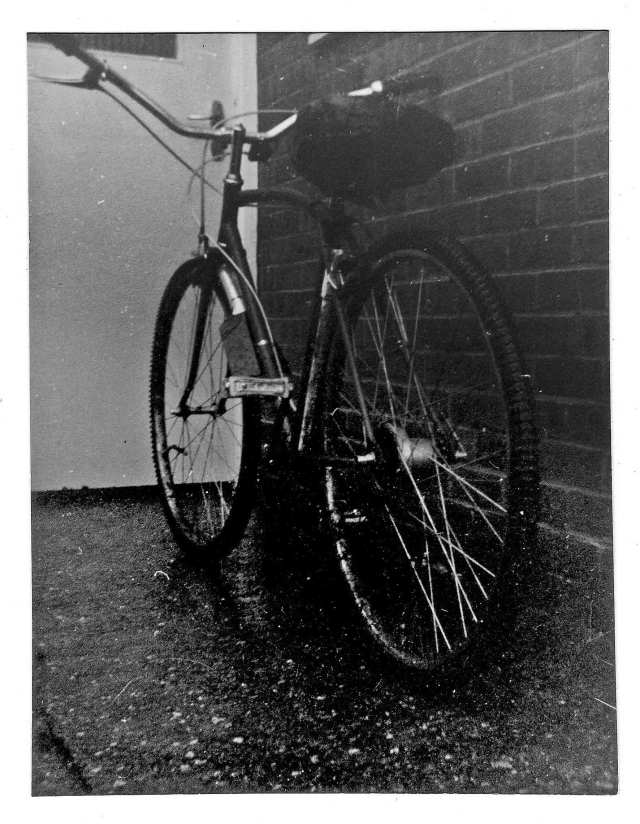
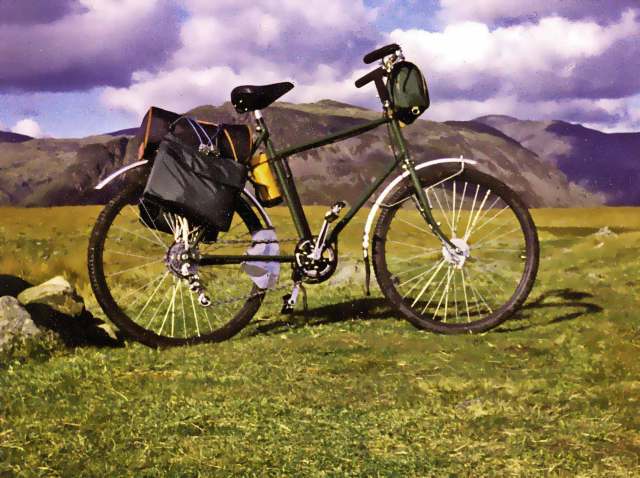
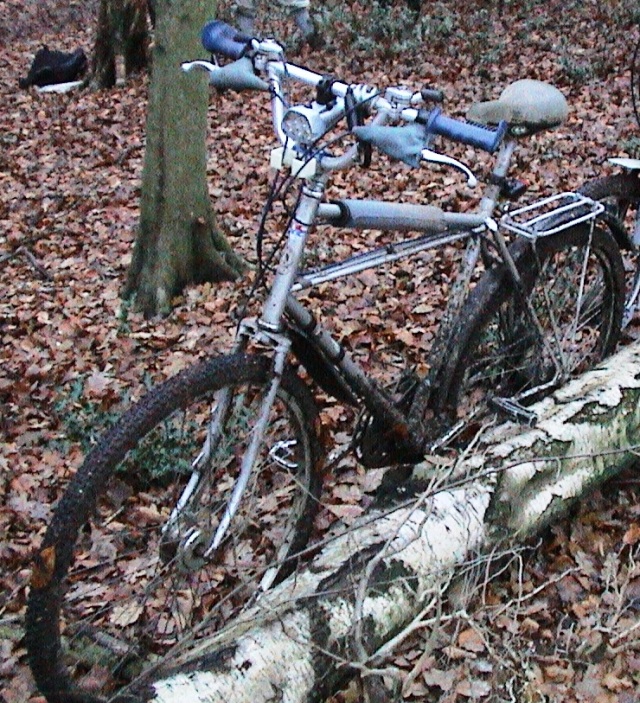

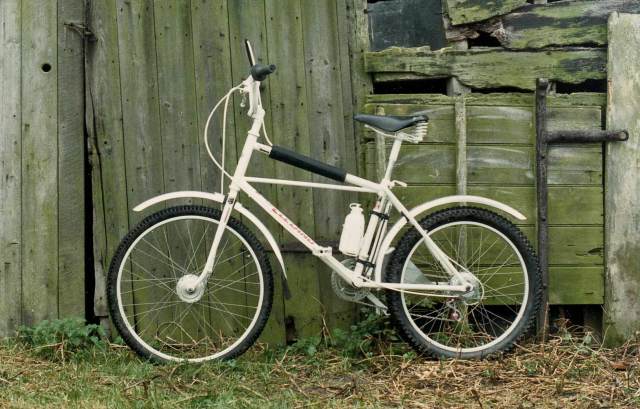
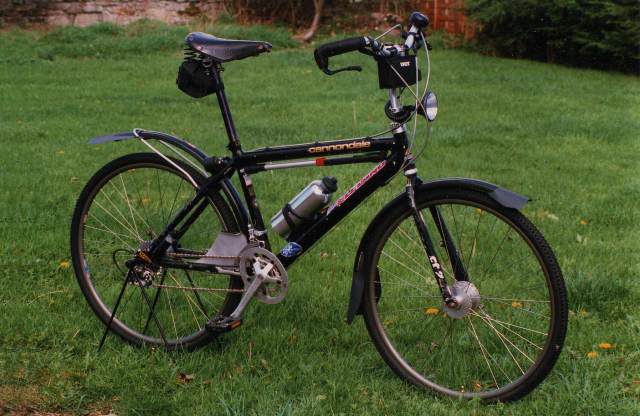
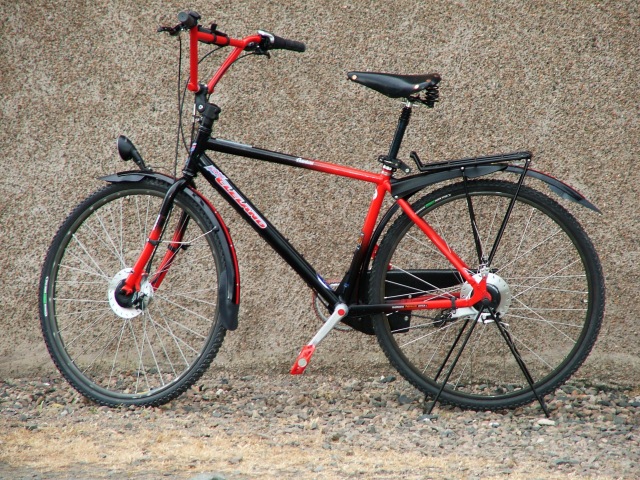

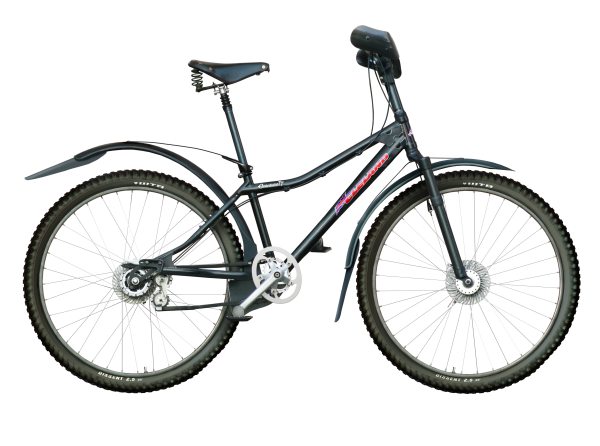
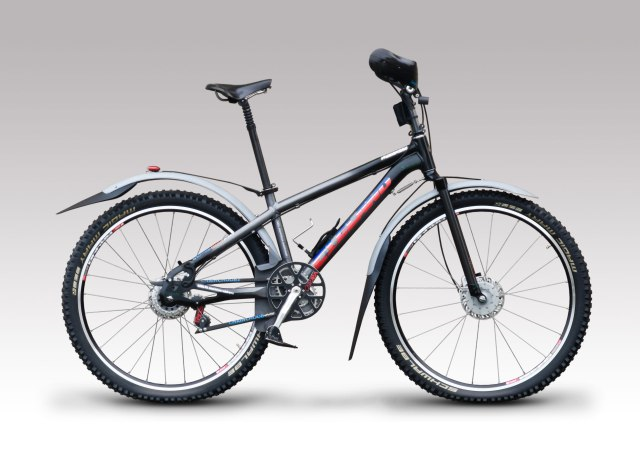
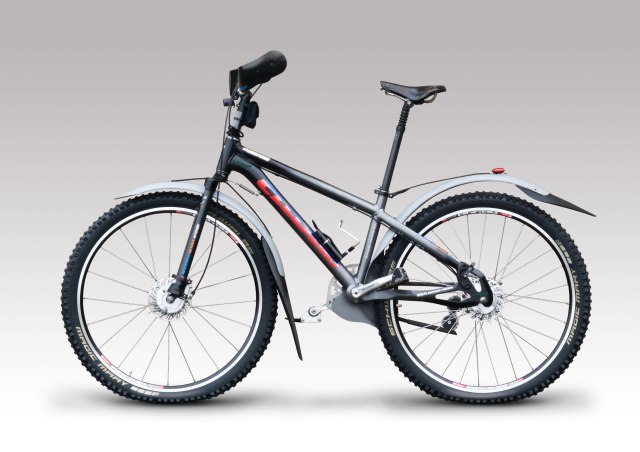





I have recently acquired an English Cycles Range Rider and would love to have some more information about it, such as the date of manufacture. I have not yet found a frame number on it! What I thought was the frame number I have been told is the Penrith postcode of a previous owner! Any idea where to look for number? Perhaps on the steerer?
Lucky you! Some refer to these bikes as ‘unicorns’, since you’re more likely to see one of them, than one of them.
After the late and much respected Ron Kitching destroyed Cleland Cycles Limited in 1984, I had no prospect of producing more bicycles. So I agreed with Jeremy Tor that he could use the Aventura frame design and the Range Rider model name for his English Cycles brand. I couldn’t use them and no-one else wanted them.
He produced quite a number over the following years; most, if not all, to special order. I was pleased that the Cleland concept would continue, for a while, at least; even if Jeremy’s iterations were not always spec’d quite the way I would’ve done it.
Frame number? Sorry, not the faintest.
Howdy I am so delighted I found your site, I really found you by error, while I was browsing on
Digg for something else, Anyways I am here now and would just like to say thank you for a tremendous post
and a all round entertaining blog (I also love the theme/design),
I don’t have time to browse it all at the moment but I have book-marked it and also added in your RSS feeds, so when I have time I will be back to read more, Please do keep up the superb job.
I’ve been reading about Apps and Cleland Cycles off and on for 25 years. Post divorce I now find myself in a position where I can do what I want, when I want, and use my own money to achieve it. With that in mind I’ve started work building my own Aventura-esque machine and I’m enjoying exploring mountain biking from the slightly different all-terrain cycles perspective. Good luck with future R&D and I hope that one day you’re successful in getting your machines into production. Seeing what people are prepared to pay these days for a quality Mountain Bike I reckon the pendulum is starting to swing your way.
I feel this is vital info for me, and I’m glad I’ve studied your articles, and the remarks on some common ideas. The web site style is perfect, the articles excellent : D. Good activity, cheers
Thank you, I’ve recently been searching for info about this subject for ages and yours is the greatest I have found out so far. However, what concerning the bottom line? Are you certain concerning supply? What I don’t realize is, if truth be told, how you are not really a lot more neatly-favored than you might be now. You are so intelligent.
Remarkable issues here! I was very happy to read your article.
Thanks a lot, and I am looking forward to making contact with you. Will you kindly
drop me a e-mail?
I’ve been reading about this bike in Privateer Magazine. It’s fascinating seeing the basic design problems of a UK trail bike re-approached. I wish you all success with it’s production, it could get a whole new demographic out cycling.
Thanks for that Joe ~ in one sense the design is not really a ‘re-approach’, from my perspective this concept has been around from before the birth of mountain bikes. However, I see your point; for most people it’s a new concept. The ‘new demographic’ phrase is interesting. The idea of riding in any mode other than the fastest you can achieve is one that comes somewhat later in life, which would suggest that age would separate those who prefer riding more sedately. Possibly the case, but I first developed this bike when I was in my twenties, so I suppose there will be younger people who like to take it steady. By the way, and this is a secret, (so don’t tell anyone else): the AventuraTT can go just as fast as a mountain bike, and depending on the rider, faster.
Thank you a lot for sharing!
Please back away from the keyboard right now. Of all the dag nab darn fool things I’ve read on the internet, this piece of mumbo jumbo takes the freakin cake. I wasn’t expecting “Jules Verne”, but crikey mate, reading this is making my hemorrhoids flare up.
Thanks for that comment, I suspect the majority of people who visit this site share your views, figuratively speaking, of course!
However, you don’t back up your comment with any technical or philosophical argument. This suggests you may simply be expressing a prejudice; values and ideas you have acquired without researching the background technology. It is very easy to follow what other people say because thinking for yourself can be quite demanding, if very rewarding, though rarely financially.
This last aspect is quite important; there are many people who do not follow the masses or fashion and who have a valid important contribution to make, but, because they are not financially successful, their views are dismissed.
So, Bicycle Tool Kits, come back with some substantial arguments, or accept that although you may not understand this design philosophy, it is not mumbo-jumbo.
Am liking all the bikes, interested to give one a ride after they hit production.
Do you have any more info on that 31″ rim / tyre? I have been using unicycle rims/tyres to get my wheels big at the moment (29″), but never heard of 31″.
Where can I get 31″ stuff
Thanks,
P
All the information I have is on the site. The supply side is quite convoluted, and I’m hoping to simplify that. It would be great if the factory could produce some lighter tyres. I’m waiting for the NuVinci hub to arrive, then I’ll build up the wheels. The question then is: should I fit them to the current prototype, or build a separate bike for that purpose. If the latter decision is made, it’ll all have to wait until autumn this year, at least.
Geoff-
Love the history and your commitment.
What is the rim size of those 31″ trials tires?
-shiggy
Thanks Shiggy ~
I suppose I am pretty committed.
Rim size is 635mm, 700B or 28″ x 1 1/2″
Pingback: Here it is… | Cleland Cycles
nice blog man
I liked looking at this section. It is good to see the development of this bike design through the years, in pictures, for a novice like me.
This website is looking very elegant.